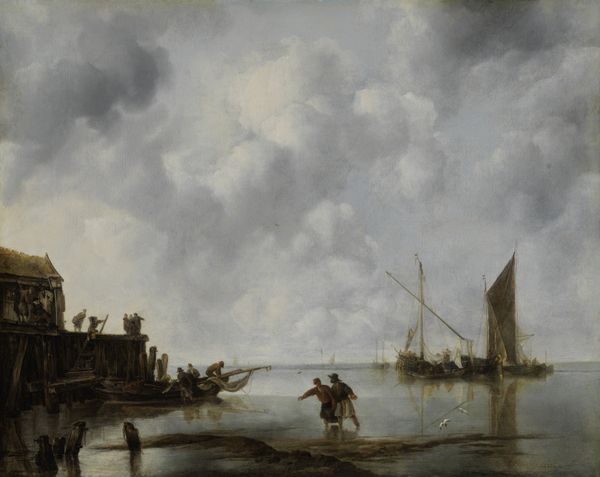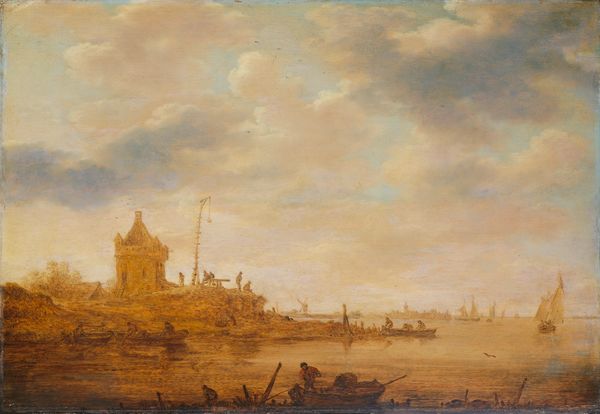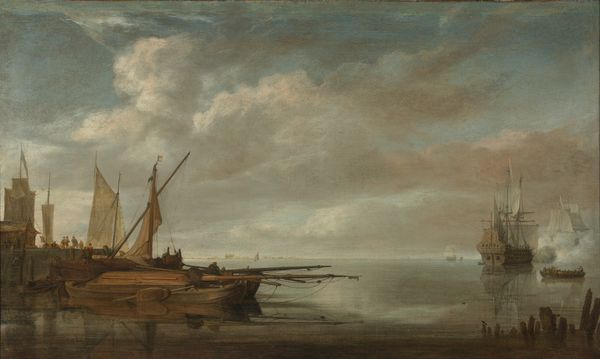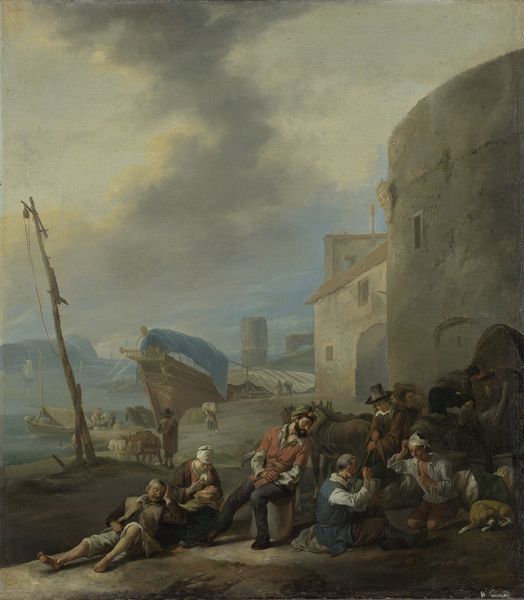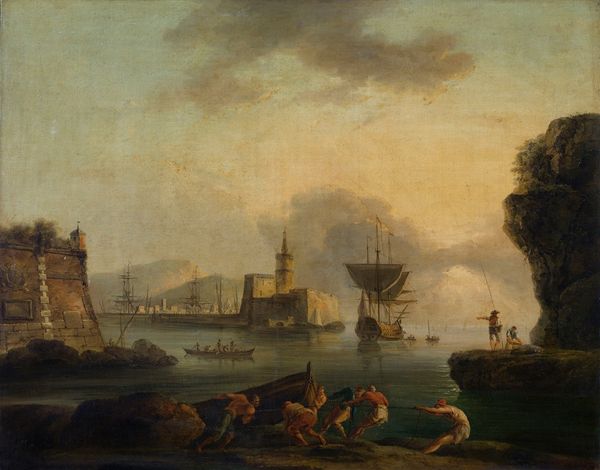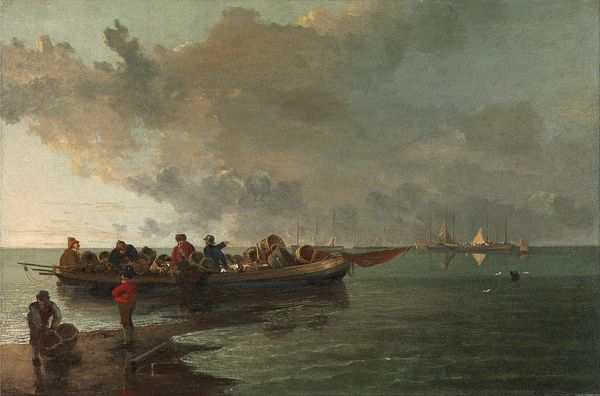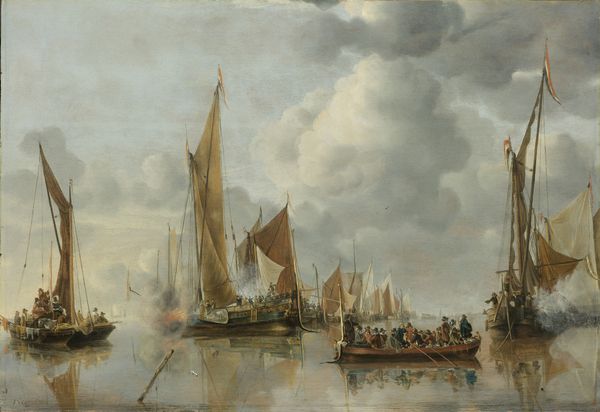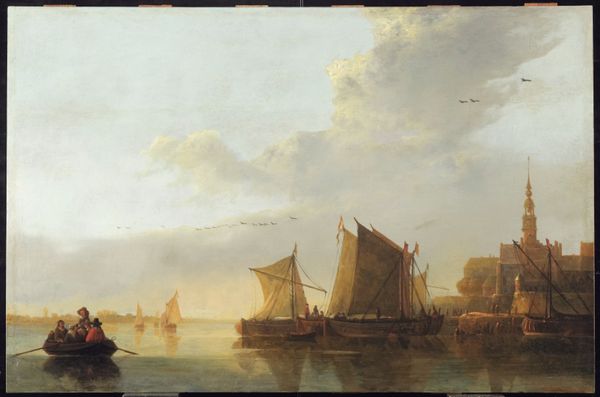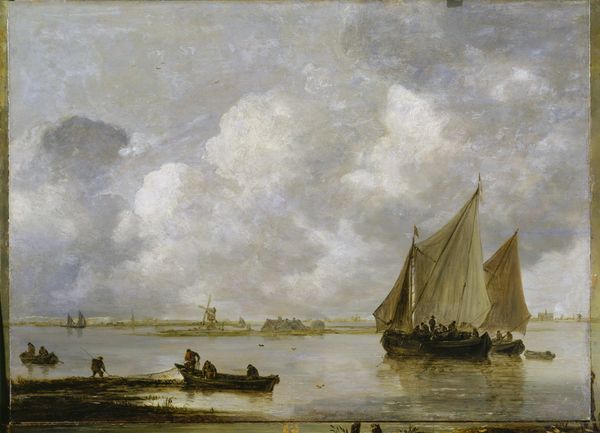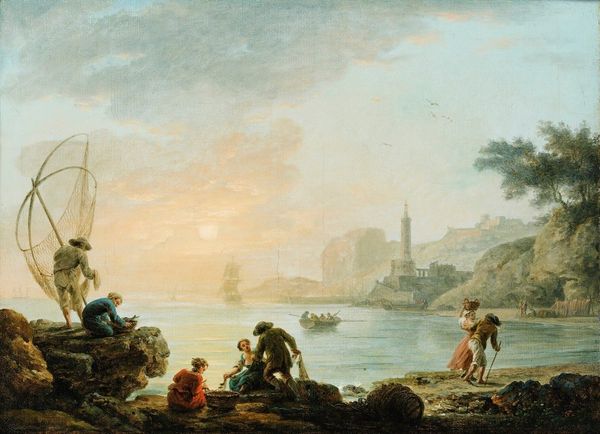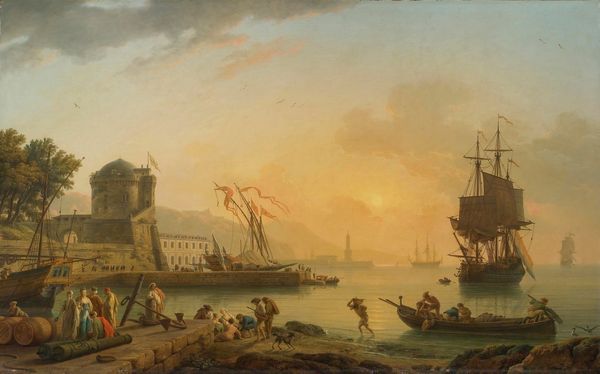
#
abandoned
#
possibly oil pastel
#
oil painting
#
derelict
#
underpainting
#
painting painterly
#
watercolour illustration
#
watercolor
#
environment sketch
#
deserted
Dimensions: height 54.5 cm, width 48 cm, height 65.4 cm, width 59 cm, thickness 3.7 cm
Copyright: Rijks Museum: Open Domain
Jan Asselijn, a Dutch artist, painted this oil on canvas titled "A Coastal Ruin in Italy" in the 17th century. This image encapsulates the prevailing fascination with the classical world during this period, but with a twist. We see not triumphant Roman architecture, but ruins, hinting at time’s erosive power. The figures lounging amidst these ruins are not grand heroes, but everyday people, a subtle commentary on the transience of power and the leveling effect of time. It's worth remembering that the Dutch Golden Age was a period of burgeoning capitalism, and perhaps this painting is a reflection on the fleeting nature of material wealth and power. To fully appreciate this work, consider the historical context. What was the relationship between the Netherlands and Italy at this time? How did the rise of a merchant class influence artistic tastes and values? These are questions we can explore through historical records, literature, and other paintings of the era. Approaching the painting in this way we can better understand the role of art in shaping and reflecting cultural values.
Comments
rijksmuseum about 2 years ago
⋮
A favourite motif of the Italianates was a small harbour on the Mediterranean Sea with a crumbling quay and a ruin. At right are an African man and a couple of Turkish traders. At the left, a man in northern European clothing gestures out to sea. Overseas trade stimulated an interest for such scenes among Dutch collectors, even though the views were imaginary.
Join the conversation
Join millions of artists and users on Artera today and experience the ultimate creative platform.
